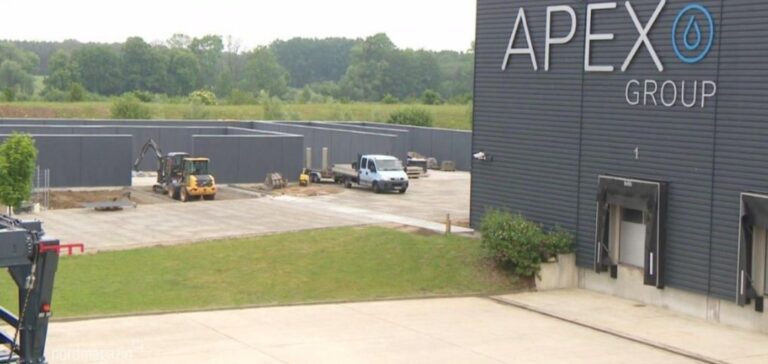APEX Group specializes in “green” hydrogen electrolyzers for industrial decarbonization. The Group has signed an agreement to purchase three strategically important plots of land in Lubmin.
The project plans to produce up to 600 MW of hydrogen by electrolysis, with the first stage scheduled for 2027.
The “flow” project will enable Lubmin to become a hub for hydrogen transport in Germany.
Hydrogen production on this site could avoid more than 400,000 tonnes of carbon dioxide per year. This is made possible by the supply of electricity from renewable sources in northern Germany. The recently acquired plots of land in Lubmin, on the site of the former Greifswald nuclear power plant, provide a suitable environment for hydrogen production. They benefit from the proximity of several offshore wind farms to the north of Rügen, with an injection capacity of around 1.5 GW. This will provide the plant with sustainable renewable energy. This land guarantees environmentally-friendly production of “green” hydrogen. They reinforce Lubmin’s position as a prime location for this activity, giving APEX Group a competitive edge in this region. This feature ensures environmentally-friendly production of “green” hydrogen. The availability of a clean energy source thus strengthens Lubmin’s position as a prime location for hydrogen production, giving APEX Group a competitive edge in this region.
The substation and the ‘Flow’ project: Lubmin, Germany’s future green hydrogen transport hub
In addition, the presence of a substation will facilitate connection to the German high-voltage transmission network. As an associate partner in the “Flow – making hydrogen happen” project, APEX will help transport hydrogen across Germany via the existing natural gas network. Lubmin will thus become a major hydrogen transport hub in north-east Germany. This strategic position will enable APEX to supply its green hydrogen to customers in southern Germany in the near future, strengthening its presence in the national hydrogen market.
Investment and future prospects for the Lubmin hydrogen project
Thanks to this project, APEX is strengthening its role as a national and international hydrogen supplier. The group plans to build a hydrogen production plant in Lubmin independently. It draws on its expertise and a vast network of technical partners. The investment required for the first construction phase amounts to around 210 million euros. These investments cover infrastructure development, feasibility studies and personnel costs. Although the project will have no impact on projected revenues for fiscal year 2023 (at least €15 million), it is expected to generate revenues after 2023. This project will enable APEX to strengthen its position as a major hydrogen supplier, both nationally and internationally.






















